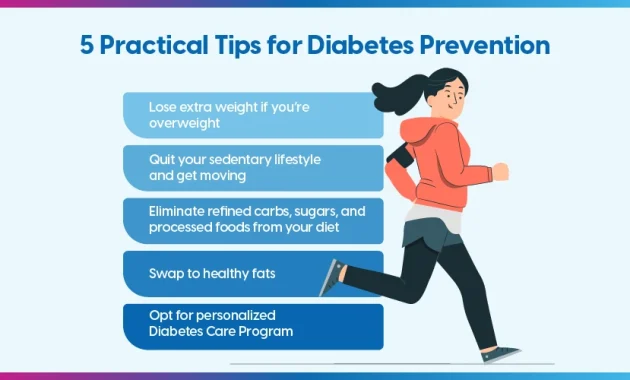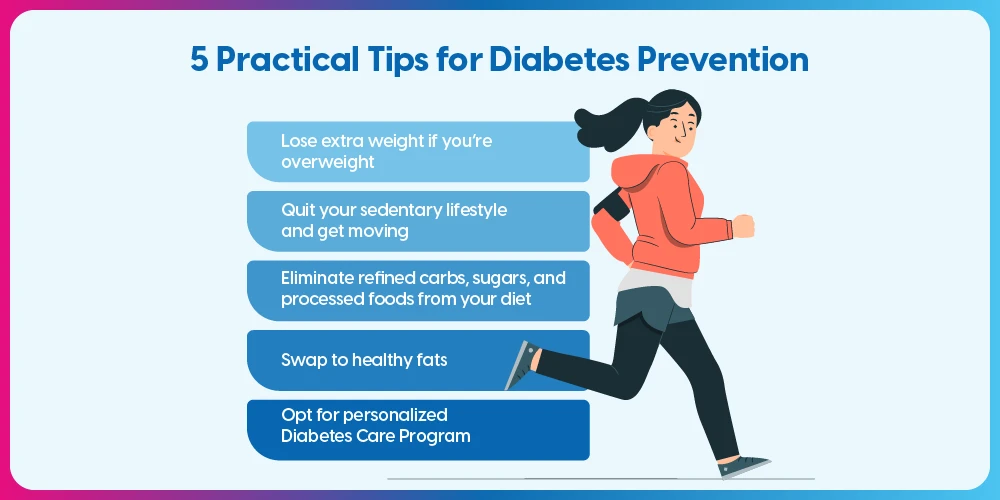
How to Talk to Kids About Diabetes Prevention: A Parent’s Guide
The rising prevalence of diabetes, particularly Type 2 diabetes, among children is a serious concern. This article provides a comprehensive guide on how to talk to kids about diabetes prevention. It emphasizes the importance of early conversations, practical strategies, and creating a supportive environment. We will explore effective communication techniques, age-appropriate information, and actionable steps parents can take to empower their children to make healthy choices.
Understanding the Importance of Early Education
Initiating conversations about health, including diabetes prevention, early in a child’s life is crucial. Children are like sponges. They absorb information and form habits at a young age. These habits often shape their future health trajectories. Delaying these conversations can lead to missed opportunities. It can also make it more challenging to correct unhealthy behaviors later on.
Early education about diabetes prevention fosters awareness. It helps children understand the connection between their lifestyle choices and their health. This knowledge empowers them to make informed decisions. It also helps them develop a sense of responsibility for their well-being. Creating a foundation of health knowledge early on also normalizes healthy habits. It makes them an integral part of a child’s daily routine.
Age-Appropriate Conversations About Diabetes Prevention
Talking about diabetes prevention should be tailored to a child’s age and understanding. Young children, aged 4-7, need simple, concrete explanations. Focus on concepts like healthy eating, physical activity, and the importance of limiting sugary treats. Use fun analogies and visuals to make the information relatable. For example, compare sugary drinks to “treats” and encourage them to be occasional.
Children aged 8-12 can grasp more complex concepts. Introduce the basics of how the body uses food. Explain the role of insulin and how diabetes affects the body. Discuss different types of diabetes in a simplified way. Emphasize the importance of a balanced diet, regular exercise, and limiting screen time. Encourage them to ask questions and express their concerns.
Teenagers (13+) are ready for more in-depth discussions. This includes the risk factors for Type 2 diabetes, such as genetics, obesity, and lack of physical activity. Discuss the long-term health consequences of diabetes. Talk about strategies for diabetes prevention, including healthy eating, exercise, and stress management. Include discussions about peer pressure and body image. It is important to support them in making healthy choices.
Making Healthy Eating a Family Affair
Healthy eating habits are a cornerstone of diabetes prevention. Involve your children in meal planning and preparation. This helps them learn about different foods and their nutritional value. Encourage them to try new fruits and vegetables. Make healthy choices the norm in your home. Pack healthy lunches, limit sugary drinks, and provide nutritious snacks.
Lead by example. Children learn by observing their parents. If you eat a healthy diet, your children are more likely to adopt similar habits. Make mealtimes a family affair. Eat together as often as possible. This provides an opportunity to discuss food choices and healthy eating habits. It also strengthens family bonds.
Educate your children about portion sizes. Teach them how to read food labels. This helps them make informed choices when eating out or shopping. Be patient and supportive. Changing eating habits takes time and effort. Celebrate small victories and focus on progress, not perfection.
Encouraging Physical Activity and Active Play
Regular physical activity is essential for diabetes prevention. Make exercise fun and enjoyable for your children. Find activities they enjoy, such as playing sports, dancing, or cycling. Aim for at least 60 minutes of moderate-to-vigorous physical activity per day. This is according to the guidelines of the American Academy of Pediatrics.
Limit screen time. Excessive screen time can lead to a sedentary lifestyle. It also contributes to weight gain. Encourage outdoor play and active games. Make physical activity a family activity. Go for walks, bike rides, or hikes together. This sets a positive example and provides quality time.
Involve your children in choosing activities. This helps them feel more invested in their health. Provide opportunities for physical activity throughout the day. This includes recess at school, active breaks during homework, and after-school sports.
Addressing Weight Management and Healthy Weight
Maintaining a healthy weight is crucial for diabetes prevention. Discuss the importance of body image and self-esteem. Help your children understand that healthy bodies come in different shapes and sizes. Avoid focusing on weight alone. Emphasize overall health and well-being.
If your child is overweight or obese, consult with a pediatrician or registered dietitian. They can provide guidance on healthy weight management. Avoid using restrictive diets. Focus on making sustainable lifestyle changes. Encourage a balanced diet and regular physical activity. Celebrate healthy behaviors, not just weight loss.
Create a supportive and non-judgmental environment. Encourage your children to talk about their feelings and concerns. Help them build self-confidence and positive body image. Address any bullying or teasing related to weight. This is crucial for their emotional well-being.
Understanding the Risks and Symptoms of Diabetes
While focusing on diabetes prevention, it is also essential to understand the risks and symptoms. Teach your children about the two main types of diabetes: Type 1 and Type 2. Explain that Type 1 diabetes is an autoimmune disease. It is not preventable. But Type 2 diabetes is often related to lifestyle factors. These include diet, exercise, and weight.
Discuss the risk factors for Type 2 diabetes. These include family history, ethnicity, and lifestyle choices. Explain that some risk factors are beyond their control. But many others can be modified. Teach them about the common symptoms of diabetes. These include increased thirst, frequent urination, fatigue, and blurred vision.
Encourage your children to report any concerning symptoms to you or a trusted adult. Emphasize the importance of regular check-ups with a healthcare provider. This helps to detect any health issues early on. Early diagnosis and treatment are crucial for managing diabetes and preventing complications.
Creating a Supportive Environment
Creating a supportive environment is key to successful diabetes prevention. Foster open communication. Encourage your children to ask questions and express their concerns. Create a safe space where they feel comfortable discussing health issues. Be patient and understanding. Changing habits takes time and effort. Celebrate small victories and focus on progress.
Involve your children in decision-making. Allow them to choose healthy snacks and activities. This helps them feel a sense of control and ownership over their health. Be a role model. Show them that you value your own health. Make healthy choices a family priority.
Seek support from healthcare professionals. Consult with your pediatrician or a registered dietitian. They can provide personalized guidance and support. Connect with other parents. Share experiences and learn from each other. This creates a supportive community.
Addressing Common Questions and Concerns
Children often have questions and concerns about diabetes. Be prepared to answer them honestly and openly. Some common questions include: “What is diabetes?” “Why do people get diabetes?” “Can I get diabetes?” “What can I do to prevent diabetes?” “What happens if I get diabetes?”
Address their concerns in a way that is age-appropriate and easy to understand. Reassure them that diabetes is a manageable condition. It does not have to limit their lives. Emphasize that they can take steps to prevent diabetes. Explain the importance of healthy choices.
Be patient and understanding. It can be challenging for children to process information about diabetes. Provide them with ongoing support and encouragement. Encourage them to talk about their feelings. Create a safe space where they feel comfortable expressing their concerns.
Resources and Support for Families
Numerous resources and support systems are available for families. The American Diabetes Association (ADA) provides information and resources. They also offer educational materials and support groups. The Centers for Disease Control and Prevention (CDC) offers information on diabetes prevention.
Your pediatrician or family doctor can provide guidance and support. They can also refer you to specialists. These include registered dietitians, certified diabetes educators, and mental health professionals. Local community organizations often offer programs and resources. These programs are related to health and diabetes.
Connect with other families. This can be done through online forums or in-person support groups. Share experiences and learn from each other. Building a support network can provide encouragement and reduce feelings of isolation. Remember, you are not alone in this journey of diabetes prevention.
Conclusion: Empowering Children for a Healthy Future
Talking to kids about diabetes prevention is an ongoing process. It requires patience, understanding, and a commitment to creating a healthy environment. By providing age-appropriate information, encouraging healthy habits, and creating a supportive atmosphere, you can empower your children to make informed choices. You can also help them live healthy, fulfilling lives. Early education, consistent effort, and open communication are key. These are the keys to a future where diabetes is less prevalent. It is a future where children are equipped with the knowledge and tools. They can maintain their health and well-being.
[See also: Related Article Titles]

